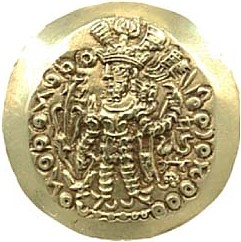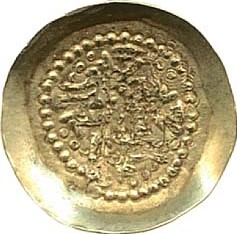Kidarite Kingdom Dinar - Kidara I (2nd version, Kushano-Sassanian style, unknown)
Posted on:
keywords: Kidarite Kingdom, Dinar - Kidara I (2nd version, Kushano-Sassanian style, unknown), Dinar, coin collecting, numismatics, Kidarite Kingdom
- Introduction: The Kidarite Kingdom Dinar, specifically the coinage of King Kidara I in its second version, showcases a fascinating blend of cultures through its Kushano-Sassanian style. This gold coin holds historical significance and artistic beauty that captivates collectors and enthusiasts alike.
- Historical Background: The Kidarite Kingdom, located in Central Asia, reigned during the 4th and 5th centuries. The coinage of King Kidara I reflects the kingdom's power and influence in the region, serving as a symbol of authority and prosperity during that era.
- Design Features: The obverse of the coin depicts King Kidara I standing left, accompanied by the tamgha symbol in the left field and the nandipada symbol in the right. On the reverse, Siva is seen standing before Nandi, the sacred bull, embodying religious and cultural elements of the time.
- Technical Specifications: This Dinar weighs 7.53g and is crafted from pure gold, emphasizing its value and luxurious nature. The intricate designs on both sides of the coin highlight the skilled craftsmanship of the minters during the Kidarite Kingdom's reign.
- Collectible Value: Due to its historical significance and unique design, the Kidarite Kingdom Dinar - Kidara I (2nd version) holds a considerable market value among numismatists. Collectors seek this coin for its rarity and representation of a significant historical period, making it a prized addition to any collection.
- Conclusion: In conclusion, the Kidarite Kingdom Dinar featuring Kidara I in the Kushano-Sassanian style is a remarkable numismatic treasure that offers a glimpse into the rich history and cultural exchange of ancient Central Asia. Its blend of artistic beauty, historical context, and collectible value make it a highly sought-after coin among enthusiasts and historians alike.
Coin Images
 Obverse
Obverse
 Reverse
Reverse

